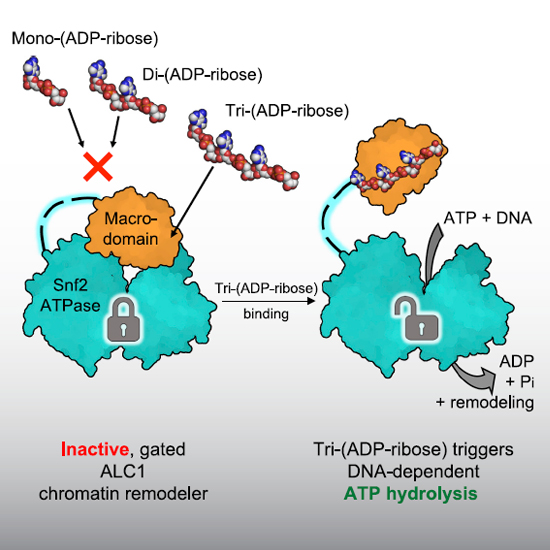A Poly-ADP-Ribose TriggerReleases the Auto-Inhibitionof a Chromatin Remodeling Oncogene
07-Dec-2017
Molecular Cell, Volume 68, Issue 5, p860–871.e7, DOI: https://doi.org/10.1016/j.molcel.2017.11.019
Molecular Cell, online article
DNA damage triggers chromatin remodeling by mechanisms that are poorly understood. The oncogene and chromatin remodeler ALC1/CHD1L massively decompacts chromatin in vivo yet is inactive prior to DNA-damage-mediated PARP1 induction. We show that the interaction of the ALC1 macrodomain with the ATPase module mediates auto-inhibition. PARP1 activation suppresses this inhibitory interaction. Crucially, release from auto-inhibition requires a poly-ADP-ribose (PAR) binding macrodomain. We identify tri-ADP-ribose as a potent PAR-mimic and synthetic allosteric effector that abrogates ATPase-macrodomain interactions, promotes an ungated conformation, and activates the remodeler’s ATPase. ALC1 fragments lacking the regulatory macrodomain relax chromatin in vivo without requiring PARP1 activation. Further, the ATPase restricts the macrodomain’s interaction with PARP1 under non-DNA damage conditions. Somatic cancer mutants disrupt ALC1’s auto-inhibition and activate chromatin remodeling. Our data show that the NAD+-metabolite and nucleic acid PAR triggers ALC1 to drive chromatin relaxation. Modular allostery in this oncogene tightly controls its robust, DNA-damage-dependent activation.











